#YoRHa stage
Explore tagged Tumblr posts
Text
youtube
Halloo En esta ocasión traigo otra de las canciones del Ongakureki de Nier Automata, esta vez, voice of no return, que fue traducida del japonés. Igual que con Obaachan no tengo los lyrics, así que podría haber errores. Aun así, disfruten!
#Voice of no return#nier yorha#Nier#nier automata#nier anime#nier replicant#nier reincarnation#nier yorha boys#nier 2b#nier series#nier 9s#nier a2#a2#yorha stage#drakenier#pearl harbor#yorha boys#yorha type a no.2#yorha#yorha no.2 type b#yorha 2b#yorha no.9 type s#yorha a2#yorha 9s#2b#Youtube
2 notes
·
View notes
Text

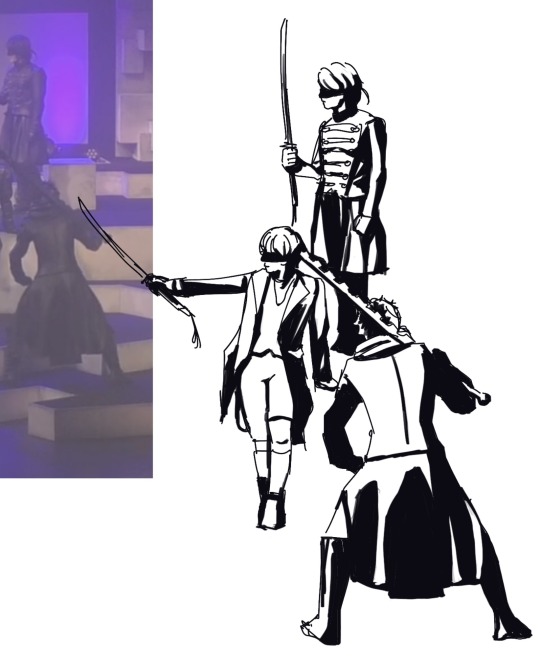



watched yorha boys and had to draw them.. their poses and costumes are so fun to me
#the actors put so much personality into their body language it’s so good.#yorha boys#yorha boys stage play#yorha boys ver.1.0#shounen yorha#nier#nier automata#fanart#azuremoon art#no.6#no.2#no.3#no.4#no.21#no.22#少年ヨルハ
71 notes
·
View notes
Text
No but like why is nobody fucking analyzing the Nier automata anime now that we know it’s a divergent timeline
Like Hello?? “ThEre’s No NeW conTeNt” bitch???? Yoko taro literally gave us a GIANT heaping platter of NEW content are you well??????
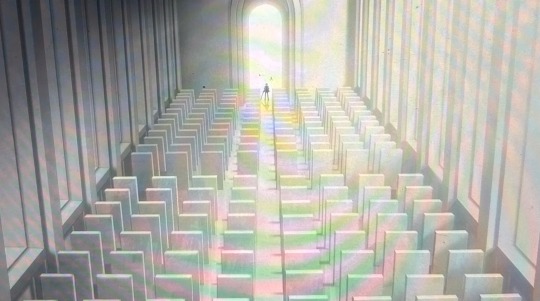
Why did Adam have the Copied City Church and why did he also have giant fucking slabs of WCS victims inside it?
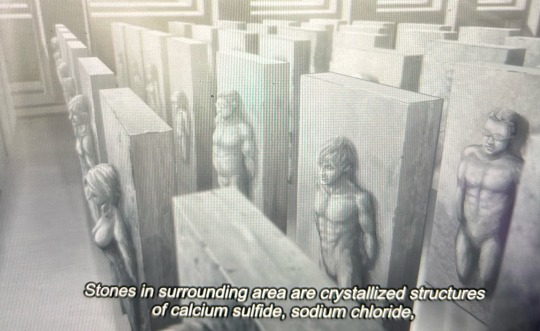
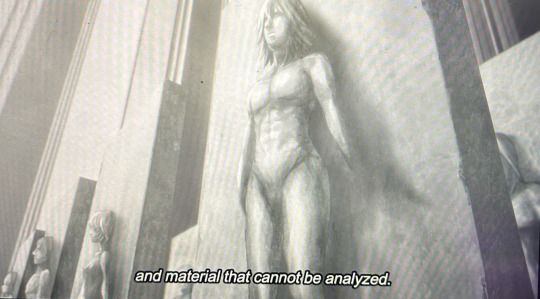
Does this mean the entirety of Copied City is WCS or just these slabs, and the city is made from Machine Lifeform blocks? (Whatever the cubes are made from that roll around)
#nier#drakengard#drakenier#No new content BITCHes shut the FUCK UPPPPPP#THERES NIER REINCARNATION AND THE AUTOMATA 1.1a TIMELINE ARE U JOKING#I’m working on a whole document that analyzes Automata game and Automata anime#I theorize Taro is making use of the YoRha girls 1.1a stage play because they follow similar naming conventions#perhaps we’ll see a 1.22 somewhere out there#I mean he didn’t really have the CHUrch mod but the door was there
111 notes
·
View notes
Text

day 22: maid dress + sailor fuku + fox
female 9H, male 9H in a maid dress and…. kitsune 9S?
#inktober#inktober 2023#nier automata#yorha boys#yorha stage play#nier automata 9s#man the stage play needs more fanart grrrr#so i did THREE of the nineses#9H is in a maid dress bc hed genuinely don one imo#and kitsune 9S comes from his switch dlc costume! i like its vibe#though his ears kinda made the mask useless now haha#ink#inktober week 3#nier automata fanart#cringetober#i did BOTH I AM THE TRUE CRINGE
27 notes
·
View notes
Text

Another non-Tumblr user (as far as I can tell.)
https://twitter.com/AnnaHart_sp
2 notes
·
View notes
Text
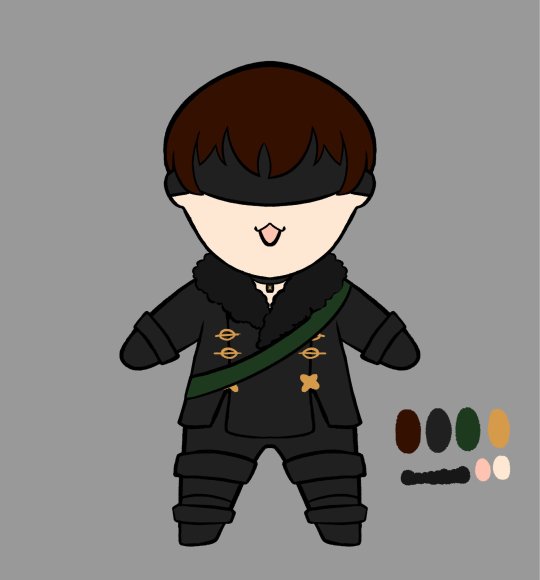
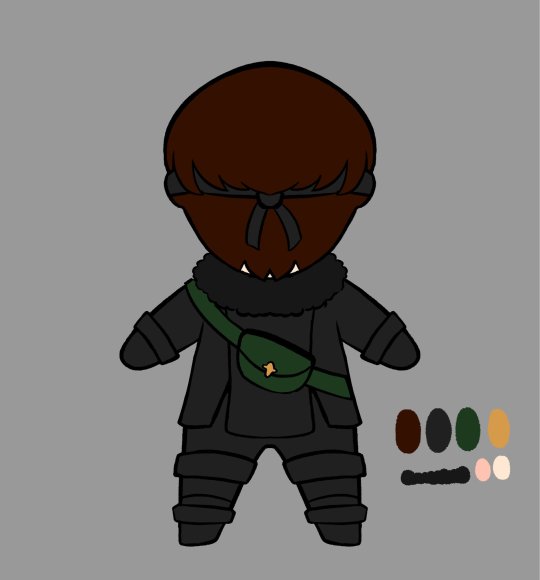
Woah who turned him into a little guy!!
#nier#nier automata#shounen yorha#yorha stage play#yorha boys#9h my beloved my blorbo my less fucked up number 9#mostly posting him here bc someone might enjoy him
15 notes
·
View notes
Text
You know my youtube maybe pretty dead but man do my shorts do better than on tiktok like I’m giving up on the clock app I don’t care enough
#laurie mumbles#okay besides my butai yorha short but like lets be real who the fuck else cares about the nier stage plays besides like 4 of us
1 note
·
View note
Text
~~
#automata anime had an ep of yorha stage play#so more people now has a oportunity to see A2 original#design#from when she was an yorha unit
1 note
·
View note
Link
Chapter 2 of the AU
FFN link
https://www.fanfiction.net/s/14183666/2/Notes-for-my-Heart
#nier automata#yorha a2#yorha s21#yorha g16#yorha a4#yorha 2b#yorha 9s#YoRHa Stage Play#nier anemone#alternate universe#my story
0 notes
Text
Paralelo entre 6O & No.6
El anime de Nier Automata nos trajo de vuelta un paralelo que siempre me gustó.


Un tema a discusión interesante, es que el atacante No.6 (6A) comparte base de personalidad con la operadora 6O. Lo cual, si leyeron la novela o vieron la obra (o leyeron mi resumen), es difícil de creer, pero no imposible.


No.6 es un sádico (bueno, medio psycho) y hedonista, disfruta del sufrimiento de aliados y enemigos y adora incomodar a los demás, sin mencionar que tiene un interés especial/obsesión por su figura de autoridad, Black

6O es una operadora de personalidad dulce y parlanchina, se ve que le gusta el romance y la moda, adora las cosas bonitas y parece tener un interés especial por su figura de autoridad, White.

Mientras veía el anime, específicamente la parte de la purga masiva por el virus lógico, cuando 2B y 9S vuelven al bunker, me pareció que los diálogos de 6O contagiada eran muy similares a los de 6A contagiado (y que difieren de los diálogos de otros androides contagiados) Si quieren ver el vídeo: https://www.youtube.com/watch?v=b24vZxoctFM&list=PLtC71dzmJ_plZ3shWYSfp4VJBNlFpQZLO&index=2




Por lo que hemos podido observar, los virus lógicos, reescriben la configuración de los androides, pero aun así, ellos son conscientes mientras están contagiados. Y si prestamos atención a lo que dicen y hacen, al menos por ahora, parece más que la función de los virus lógicos es amplificar ciertos deseos y fijaciones que tienen, oscureciéndolas; así como desinhibir sus impulsos y limitantes.
De manera que, los orillan a decir y hacer, deseos oscuros que debido a sus limitantes y control, no llevan a cabo normalmente. Deseos bondadosos y amables torciéndose a una forma obsesiva y sádica.
Lo cual, es un tema recurrente en la saga Nier, lo podemos ver con Nier (el rey de las sombras), con 9S, 2B, con Jakob (el hermano mayor de la chatarrería), con Louise, incluso Adam.
Así que cuando escuché más de cerca (acá en el anime) a 6O, ella, al igual que No.6 en la novela y la obra, habla sobre el hecho de que es divertido hacer una matanza masiva.


Gracias al experimento realizado con la unidad M, se designó que todas las unidades masculinas fueran escáneres, y se determinó también, que el grado de peligrosidad de las unidades No.6 era tan alto que NO podrían usarlas directamente en el campo de batalla.
Así que no me sorprendería que (incluso si el bunker no se hubiera destruido) 6O no pudiera jamás bajar a la tierra si es que alguna vez solicitó cambio de especialidad, como por ejemplo, lo logró 21O cambiando su especialidad a un modelo B.
De haberlo solicitado, creo que la petición de 6O habría sido rechazada, considerando que la unidad No.6 se marcó como peligrosa por sus tendencias sádicas. Así que puede ser que en el fondo, 6O guarde algún impuso sádico o tendencia a desarrollarlo

No.6 (a diferencia de 6O) era una bomba de tiempo, él eventualmente habría terminado por atacar a sus compañeros, lo hizo una vez matando a No.3 (el otro atacante de la unidad M), ya que como atacante fue programado con una agresividad mayor a otros modelos, no obstante...

Por lo que se menciona en los panfletos, uno de los detalles que torció a esta unidad fue su alta inteligencia, gran habilidad en combate y consciencia de sí mismo.
6O obviamente es una unidad inteligente que se encarga de las comunicaciones y evidentemente piensa a profundidad en cosas que le gustan y aunque es algo crédula y romántica, tiende a un pensamiento lógico, como en uno de esos tantos correos que envía en el juego, donde se califica la astrología como una tontería.
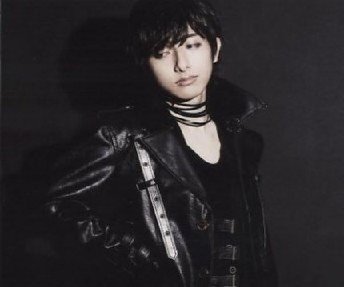

De modo que, ambas unidades sí tienen rasgos de personalidad muy similares, pero al aumentar ciertos puntos para facilitar sus especialidades, más sus experiencias individuales, generan un cambio tan drástico de una unidad No.6 a otra No.6, pero es interesante ver los extremos de una misma base de personalidad, donde una busca apreciar la vida y la otra busca mancillarla


Ahora, otro paralelo es justamente la muerte que tuvieron. Pues a No.6 lo mató Black atravesándolo con una espada para sobrecargar su caja negra, mientras que a 6O White también le atravesó el pecho con una espada.


Además, de que posterior a eso, en ambos casos, los 4 terminan expuestos a una explosión que los elimina completamente. También tenemos un último acto: White abraza a 6O, Black afirma querer colocar una mano en el hombro de No.6 para reconfortarlo, sin embargo, al estar tan herido, no podía moverse para alcanzarlo y lo mejor que podía hacer era quedarse con él. Además, si sumamos la obra YoRHa Girls que es un genderbend de YoRHa Boys, la instructora Black, también atraviesa No.6 y de hecho, al no estar tan herida como su contraparte masculina, acaricia la cabeza de No.6 y finalmente la abraza para morir en la explosión con ella.



#nier automata#yorha#nier yorha#nier#yorha boys#nier yorha boys#yorha boys novela#yorha boys novel#yorha boys stage play#yorha girls#instructor black#commander white#yorha 6a#no.6#yorha no.6#a6#nier automata ver1.1a#nier automata stage play#nier automata novels#nier automata yorha boys#nier automata game#nier automata anime
6 notes
·
View notes
Text
Summer 2024 anime roundup: ALL IN ONE
hey! i also post these reviews on my ko-fi. this is a labor of love so if you like the stuff i write, i'd really appreciate it if you'd throw a few bucks my way. thanks!
Well, I'm much busier now than I was in the first half of the year, so that means less time for anime and less time for writing about it. I managed to watch only (ONLY?) nine shows this season, so might as well put it all in one post.
As always, each show's OP is linked in the title.
Let's jump in.
Returning anime

NieR: Automata Ver. 1.1a, part 2
After a COVID-plagued production delayed the last few episodes of its first half last year, A-1 Pictures’ adaptation of Yoko Taro’s landmark action-RPG returns to deliver the real meat of the story. And as with the game, the first half of NieR: Automata Ver. 1.1a was something I’d classify as “pretty good!,” while the remainder is what makes the entire endeavor worthwhile.
I’m happy to report that not only did the studio not lose a step, but they improved on the presentation of Ver. 1.1a immensely. The action sequences are superb and expressive throughout, and the CGI integration is actually, y’know, integrated this time out. The score, both original and borrowed from Keiichi Okabe’s contributions to the NieR duology, remains as evocative as ever. They also ramped up the cheesecake more than a little bit, and let’s be real, that was the draw for a lot of people in the first place.
If there’s any one thing Ver. 1.1a can claim as an advantage over the game’s narrative, it’s that the former does a lot more work in building on A2 as a character. There’s just enough to chew on in the game, but having more of her backstory from the YoRHa stage play and manga adaptation integrated into the narrative makes for more of a meal. Having A2’s history and real personality pinned up as a backdrop as she struggles to suppress both really fleshes out her journey and eventual resolve as shit continues to hit the fan. She’s also just a big ol’ tsundere sometimes. And not for nothing, but they gave her an absolute DUMPY for no reason, but I can’t really pin that as a negative.
9S’ whole thing happens too. I really don’t have much to add to that.
When I reviewed this show’s first half at the end of 2023, I mentioned that the initial concern with the anime’s very existence is that it’s adapting a narrative that is functionally being told through the very fact that it’s a video game. The delivery of the game’s true ending, especially, is so innately A Video Game that it’s functionally impossible to adapt directly into a television show. I’m happy to say that although that function is lost, Ver. 1.1a’s ending is still plenty satisfying (and I’m told especially so for Drakengard fans, without giving too much away). Something is still very much lost in the transition, though. In his review of the penultimate episode, Anime News Network’s James Beckett wrote:
What the anime of NieR:Automata has not been able to capture in these critical final moments is the way that the game makes its players complicit in the tragedy in a way that they could never be if they simply sat down and passively watched these events unfold from behind the safe veil of the fourth wall. It would be like if we were each individually guided on stage to place our hands on Hamlet's shoulder and push him gently onwards to his final destination. It doesn't change anything about what happens in the story, but it changes everything about what it means to us.
These acts of “ludonarrative culpability,” as Beckett called it, are the reason why Yoko Taro is considered an auteur in the gaming sphere. Both NieR games are tragedies writ large, and Yoko’s genius lies in making you, the player, carry out the tragedy, often well before you realize what you’ve wrought. And to Beckett’s point from his review, NieR: Automata is a perfectly fine sci-fi story in its own right, but the game puts the blood squarely on the player’s hands and inserts them into the narrative in a way that simply watching cannot. The connection I felt to the story was only there because I’d already played the game myself; I can only imagine how it would feel if this was your introduction to NieR.
So to return to a question I suggested at the end of last year: Do I recommend this to people who haven’t played the game? Eh, not particularly. It’s a well-made show, to be sure, but there’s enough missing from what makes Automata such an exceptional game that I’m not sure I can recommend it wholeheartedly if you’re not already familiar. Then again, I wouldn’t really know how it reads from the other side. To those who know and love the game, Ver. 1.1a isn’t quite the “Rebuild of NieR” some were hoping it to be, but it’s an interesting companion piece that takes surprising strides to tie it even closer to the preceding franchise. If you’re a newcomer? YMMV. Either way, play the game.

Oshi no Ko, season 2
I spent far more time than was necessary in the Discourse Mines following Oshi no Ko’s thunderous debut last year and a controversial (but fortunately inconsequential) turn of events in the manga shortly after the season finale. Though I remain one of the series’ foremost glazers, I’ve had my moments where I worried that maybe I overrated it a bit in my head, that I carried too much water for writer Aka Akasaka, and that I’m still riding the high of the series’ premiere.
Oshi no Ko’s second season completely erased any lingering worry almost immediately and reminded me and the world that yes, it Really Is That Good. The “It’s So Over” switch flipped to “We Are So Back” as soon as best girl Kana Arima and co-lead Taiki Himekawa dazzled their co-stars and one another with literally colorful displays of their acting prowesses. My expectations continued to rise as an active reader of the source material, and studio Doga Kobo continued to surpass them. This adaptation is just that good.
Aqua’s quest for revenge and Akasaka’s continuing examination of Japan’s entertainment industry both lead us into the world of stage acting, specifically 2.5D adaptations of famous manga and anime. Aqua is cast alongside Kana and his sham girlfriend and former reality show co-star Akane in an adaptation of the fictional smash hit shonen manga Tokyo Blade, along with several members of a theater company to which Ai once belonged. While Aqua is more concerned with getting dirt on Ai’s background than he is with acting, Kana and Akane have much more personal stakes as they try to show one another up and still put on the best play they can. Kana can’t stand Akane’s absolutist, matter-of-fact approach to acting (nor the fact that she’s fake-dating the guy for whom Kana’s down abysmal), while Akane, who idolized Kana as a child and is disappointed to see her take a step back as an actress, is trying her damnedest to rekindle the spark that convinced her to pick up acting in the first place. On the fringes, rookie actor Melt Narushima is trying to make up for a heinous performance in the first season that earned him the scorn of his more experienced castmates as well as a mangaka’s permanent ire.
A good amount of this arc does feel like Akasaka was still sorting through his feelings about the Kaguya-sama live adaptation when he wrote it, but he also gave himself some room for reflection on his own side of the equation as a mangaka. Tokyo Blade’s creator, Abiko Samejima, holds her creation very dear and is not impressed with the script. Her friend and former boss, Yoriko Kichijouji, is entirely too familiar with how badly the process can go; her own manga, Sweet Today, was horribly botched in this show’s first season, and she wants to help Abiko-sensei keep a level head. Kichijouji-sensei is the voice of reason this time out as she points out all of the concessions creators may need to take in order to get their work adapted and the unimpeachable truth that mangaka are basically crazy people (and you can practically hear Akasaka screaming through her lines; four months after Kichijouji said this in the manga, Kaguya-sama published its final chapter, marking Akasaka’s retirement from illustrating serialized manga). At her urging, in addition to an all-nighter helping Abiko-sensei make a deadline, the play goes off without any more hitches.
I didn’t much care for the Tokyo Blade arc in the manga but I knew full well that it would translate well to anime just as well as the acting sequences in the first season had. Akasaka’s decision to have the actors treat the stage as a battleground felt a little silly on the page, but experiencing everything again in sound and motion reminded me that this was the same genre of psychological competition that made Kaguya-sama one of my all-time favorites. Doga Kobo is just stupidly good at adapting manga. God, the animation is incredible. Character animation is as deliberate and mesmerizing as always, and emotional moments are punctuated by interpretive splashes of watercolors. Melt’s breakout on stage was a standout moment in the manga, but the abstract, expressionistic depiction of his redemption was so perfectly conceived on screen that life imitated art: Kichijouji-sensei cried in the anime, and manga artist Mengo Yokoyari cried in real life.
I could go on and on and on, but if you’re already this deep into Oshi no Ko I really don’t need to tell you anything else. This season, for all its gorgeous visuals and onstage glory, does not hesitate to remind you at the worst possible moments that this is still ultimately a revenge story and pulls the rug from you just as gleefully as it dazzles. The first season was already exceptional, but the second cements Oshi no Ko as an all-time great adaptation. As a fan of the manga, this is as good of an anime as I could ask for, and then some.
Mixed Bags

My Deer Friend Nokotan
I’m just exhausted.
I’ll admit, I bit a little too hard on the marketing. The preview trailers promised madcap, nonsensical fun on the level of Nichijou or Asobi Asobase, the cast was exceptional, and the OP’s refrain was a total earworm (Shikanoko Nokonoko Koshitantan! Shikanoko Nokonoko Koshitantan! Shikanoko Nokonoko Koshitantan!). It even has the cast jumping in the air! And we all know the Ryo Yamada rule! This was going to set the bar for gag anime!
Oh, how little I knew. Y’know how sometimes you see a trailer for a middling comedy movie and you can tell they already gave away all of the movie’s best jokes? Turns out My Deer Friend Nokotan did just that. I did temper my expectations; it’s not like I thought this was going to be the second coming of Nichijou or anything, but I guess I was still expecting something, I dunno, funnier?
The premise seemed to lend itself to a good comedy either way: Torako Koshi, a former delinquent, has successfully expunged her prior reputation and worked her way up to becoming her school’s student council president. All of that is nearly thrown away when a bizarre new student, Noko Shikanoko, immediately clocks her and almost spills the beans. Also, Shikanoko (who prefers to be addressed as Nokotan) has antlers and can commune with deer. She may even be a deer herself. She hoodwinks Koshi into starting a Deer Club at school, where they recruit Koshi’s upsetting younger sister Anko and the languid, rice-obsessed Bashame. Allegedly, shenanigans ensue.
Take this with a grain of salt, as humor is very subjective, but this show just plain isn’t very funny. Nokotan’s gags hit at least as often as they miss, and a lot of them just feel unforgivably dull. One bad segment can feel like an entire episode. The only reliable gags are gross-out humor, outsized slow-motion violence, or Nausicaä references. Everything else is just Koshi barging into the lower third of the screen to shout about how wacky the joke was just then.
Look, I know that humor doesn’t always translate across cultures. The things I don’t understand about Japanese humor could fill several libraries. I do, at the very least, get the basics of the boke/tsukkomi dynamic (fool and straight-man, basically) and how the reaction to a silly thing is usually the real punchline. I’ve absorbed enough Japanese media to adapt to that momentum. That nearly goes out the window here, because Koshi’s role as the tsukkomi is a straight-up momentum killer. It’s rarely just a “wait, what?!” or a “yeah, that’s rich coming from you;” it’s usually more like “wait, that is so ridiculous! You couldn’t possibly have pulled that off! And what’s that you’re wearing all of a sudden?” The rhythm is just gone. Comic timing? Don’t know her. Even if I thought the joke was funny at first, you could probably see any semblance of a smirk fading off my face by the time she was done. And hey, maybe some of this stuff doesn’t translate. Maybe it’s not that funny in Japan either.
The other characters outside of our main two really don’t help. Anko’s whole “yandere siscon” act isn’t very funny to start with, and she brings nothing to the table otherwise. Bashame is such a nothing character that even Koshi was sick of her by the end of the season. And while I feel like a good narrator can add a good level of je ne sais quoi to a comedy anime (see: Kaguya-sama), an overly intrusive one can actively take away from the humor (see: the Kaguya-sama dub). Nokotan’s narrator comes at it with a sort of winking, nudging “HEY, WE’RE A GAG ANIME” energy that gets too grating, too quickly. What doesn’t help is that he eventually affects a fake-desperate “please watch this show and tell your friends!” bent that called to mind Ron Howard’s narration in Arrested Development’s third season as it was approaching cancellation. Meta humor, as in the latter, can absolutely elevate the level of comedy; 100 Girlfriends in particular wielded it like a machete. In Nokotan, on the other hand, it betrays a clear lack of confidence in the writing, and there’s nothing less funny than comedy that doesn’t even believe in itself.
It’s not all awful, I swear. There are genuinely some very good gags; Nokotan’s cat-and-mouse game with an anachronistic matagi was a blast from beginning to end, and the skin-suit gag got a bigger laugh out of me than almost anything else I saw this season. Any good anime, especially a comedy, lives and dies by its voice cast, and Megumi Han’s performance as the titular Nokotan is this show’s whirring, beeping life support. She makes the absolute most of her considerable range as the jokes call for it, while somehow never stepping on her own toes by dipping into her Kana Arima voice from Oshi no Ko. Koshi shares a VA with Hatsune goddamn Miku. Bashame is pretty much only tolerable thanks to the languid performance of relative newcomer Fuuka Izumi, whom I’m very glad to hear in something that isn’t Gushing Over Magical Girls.
And aside from the music (the OP, to be fair, is infectious), that’s about all there is to like about the production. Did Studio WIT really make this? It looks like it could’ve been made by anybody, and that’s not a compliment. The uncanny CGI deer were the only real visual standout, and even those lost their shine before long. Something attempting to be this audacious needs to have a look to match, and Nokotan falls flat. Again, maybe that’s on me for trying to hold it to the standard Nichijou set.
I’d honestly be surprised if this gets picked up for another season. I’d be hard-pressed to come back for more.

No Longer Allowed in Another World
(CONTENT WARNING for discussion of suicide)
Osamu Dazai was one of the most complex and fascinating figures in Japan’s modern literary canon, right up there with his ideological opposite and real-life rival, Yukio Mishima. Dazai was, frankly, a disaster. He was a serial womanizer, terrible with money, repeatedly disowned by his family, unemployable, a deadbeat dad, and hopelessly addicted to drugs and booze. His magnum opus, Ningen Shikkaku, or No Longer Human, is a stark semi-autobiography, just barely fictionalizing his repeated failures of dignity and self-preservation, including his several failed attempts at double-suicide with his many illicit lovers. The same year it was published, however, Dazai was successful in his final attempt, drowning himself alongside his mistress in 1948.
But like, what if he got hit by the isekai truck instead?
Isekai Shikkaku, or No Longer Allowed in Another World, fully Goes There. The series begins with the legally distinct, unnamed Sensei and his lover Sacchan blindsided by an anachronistic truck along the riverbed. Sensei comes to, alone, in a monastery inspired by the JRPGs from well after his time. He doesn’t know what’s going on and he doesn’t care. All that matters is that he’s still alive, and that sucks for him. Sensei is greeted by Annette, an elf priestess in a virgin killer sweater, who is shocked to discover that not only has he not gained a single stat boost by coming to this world, but he’d also rather kill himself than take her up on the standard offer of an OP cheat skill (and he’d also just rather kill himself in general). So he bounces to go find Sacchan. His refreshing outlook on the new world, as opposed to the other excitable losers who got isekai’d before him, completely melts Annette’s brain to the point of falling in love with him on the spot, so she dons her sluttiest Persona 3 battle armor to chase after him.
Sensei hates this shit. Contemporary western fantasy hadn’t made its way to Japan yet in his time, so he has zero point of reference in this world, and he sure as shit has no clue what a JRPG is. The level-up jingles give him migraines. He has no self-preservation instincts and the only solace he has in this strange new world is a jar of toxic sleeping pills that he munches like M&Ms. He has no interest in or aptitude for fighting, so when he encounters a big-tiddy catgirl being squeezed half to death by a walking tree’s branches, Sensei sees the perfect opportunity to get himself killed. Unfortunately, his blood has become so toxic from said pills that piercing his skin instantly kills the tree, saving the young lady he incorrectly names Tama. Much to Annette’s consternation, she joins the party, and they set out on Sensei’s quest to find his lover and finally die in peace.
As you can guess, that’s not what happens. For some time, we see Sensei throwing himself in harm’s way, floridly imploring various fantasy monsters to kill him in one shot with their big bats, to the point where they get creeped out. His vaguely-threatening exhortations for death make for a fine formula, but one that can wear thin quickly. Before it gets that chance, though, the seed planted in Annette’s introduction bears fruit: The visitors to this world from our own aren’t here in isolation, and they have succeeded in completing the usual isekai goal of overthrowing the demon king. There’s now a massive power vacuum, and nature abhors that shit, so a cabal of erstwhile isekai protags dub themselves the Fallen Angels and decide to take over.
This turn was, to put it bluntly, the main thing that kept me watching. There’s a fine bit of commentary inherent to this framing that the type of wet-noodle, borderline faceless self-insert isekai protags tend to appeal to antisocial losers who would rather give into their basest impulses than see an opportunity to actually better themselves. This is not at all lost on Sensei; his keen eye for the human condition leads him to interrogate the Fallen Angels his party encounters so that he can write about their own failures as humans, as well as the gaping voids in their previous lives that led to them acting like petty tyrants as soon as they gained a bit of power and treating a brand new world like their own personal playground. Sensei’s writings reveal that he did indeed gain a power when he came over to this world; if he sees fit, a finished book will surround its subject and reanimate them back in their original world and afford them a second chance to right their wrongs or, in one particularly moving case, start over on the right foot.
For as audacious as No Longer Allowed’s premise is and as impeccable its comic timing and voice cast (you will find some absolute heaters completely buried on the call list), I just didn’t find it all that compelling. Isekai as a genre is so oversaturated that it was old hat to call it oversaturated even five years ago, so while I do try to pan for gold, sometimes I just come up with a neat-looking river stone. Hell, I can’t even say this one’s all that neat-looking; there’s nothing that looks all that great about it to begin with. The character designs and backdrops are pretty standard JRPG-style stuff that you’re just as likely to find in the likes of Helck, with lackluster animation to match. Didn’t care too much for most of the characters either. Even for its commentary on the isekai genre and the type of person it caters to, No Longer Allowed just ends up shaking out like another isekai series.
There’s clearly more at play here, and I might just go ahead and read the manga because I didn’t really find myself looking forward to watching the anime. Maybe it just didn’t translate well. No Longer Allowed in Another World does clearly have something to say under its silly premise, but its method of getting that message across is, ironically, buried underneath the usual trappings of the genre it’s trying to say something about.

Wistoria: Wand and Sword
I’m gonna preface this by saying that Wistoria is probably the best anime I watched this year that I’ve classified as a “Mixed Bag,” save for Jellyfish Can’t Swim in the Night. I’m generally of the mind that excellent production can make up for a middling story (my enjoyment of the likes of Solo Leveling and Wind Breaker this year was pretty emblematic of that), and that is the case here for the most part. Wistoria, story-wise, is nothing special; it’s your standard power fantasy set in a magical school, but the entire presentation is just almost fascinating enough to overcome that hurdle.
Hell, it’s almost not even worth going over the plot. Unassuming boy named Will goes to a magic academy, he doesn’t have any magical aptitude, so he makes up for it by honing his hand-to-hand combat prowess in the school’s designated dungeon. It’s Mashle meets Solo Leveling. Will gets picked on (like, a LOT), but he doesn’t care, because he made a promise long ago to reach the pinnacle of magical society to reach his childhood friend, who happens to be a genius mage. There are duels, there’s a tournament, there’s monsters, you know how this goes.
Will has allies in the school, namely a female friend who’s madly in love with him as well as a professor who covers for his shortcomings in magic-related subjects, but remember that this is a self-insert fantasy: There are also increasingly menacing bullies for him to put in their place. Will is challenged by a Snape-like instructor, a classmate who just hates him so much for not having magic aptitude, and a top performer at the school who’s just flat-out evil (and racist to boot!). And of course the latter two also have goon squads of snickering hangers-on. Will always succeeds, of course, because despite his shortcomings, he’s the strongest and most specialest boy. It’s almost like an isekai without the isekai. Too bad we find out that Will is hilariously shredded, which kinda blows a hole in the self-insert aspect.
Goofy shonen-isms aside, there’s still plenty to enjoy here. Varying types of magic, artifacts, and fantasy races abound, and lore is sprinkled throughout the show in character biographies in the commercial break eyecatches. The story does get gradually less stupid as the season goes on and characters are better fleshed out. And hey, there’s nothing wrong with watching a really strong dude beat the shit out of monsters and assholes.
The only thing that really kept me coming back to Wistoria was that, plainly, it looks and sounds fucking awesome. It’s not the best-looking anime I watched this season (that would either be Oshi no Ko or one of the next two anime on this list), but Wistoria takes such a surprisingly cinematic approach to such an uninspiring story that I couldn’t help but keep watching. The lighting effects are lush, combat animation is bonkers in its best moments, and the score is pretty darn good too. It definitely takes some big swings at simulating camera movements and perspective shots that don’t always accomplish what they set out to do, but I can appreciate the ambition bleeding through. I can see the vision, and that’s what counts.
The actual content is pretty paint-by-numbers, but Wistoria is well-made enough that it’s worth a shaky recommendation. Maybe just turn your brain off until the action picks up. I've heard the manga gets pretty good from here on out, so I'll probably stick it out for another season.
The Gems

The Elusive Samurai
If you’re not already familiar with this series, do me a favor and watch the OP linked right above. Pretty good character animation, right? Expressive, weighty, plenty of personality. The colors pop like crazy too! A lot of the time, an anime series will heavily stylize its OP to attract eyeballs and YouTube metrics, oftentimes bringing in outside animators and directors for a unique feel. In the case of The Elusive Samurai, I cannot stress enough that all that animation is the standard.
Yes, this show looks exceptional. Even putting aside the fact that it’s historical fiction, this show has a truly timeless look to it that I still struggle to put into words. The Elusive Samurai is clearly a modern production but bears all of the hallmarks of what great animation has always looked like when a studio is willing to invest in it: Colors are so bold and saturated that I want to take a damn bite out of them, backgrounds are painstakingly hand-painted even for brief cuts, and there even seems to be a film grain overlay to really sell the classic feel. It’s not perfect (I’ll get into that later), but holy shit is it a feast for the eyes.
Adapted from the pages of Weekly Shonen Jump, The Elusive Samurai is a heavily fictionalized retelling of the fallout of the Siege of Kamakura in the 14th Century. Tokiyuki Hojo, left without a family in a bloody coup of the shogunate, is prevented from committing suicide by enigmatic priest Yorishige Suwa and then thrown right back into the fire of the battlefield. Yorishige, who has prophetic visions of the future, foresaw Tokiyuki’s ascent to leadership and wants to see how he fares in battle. Tokiyuki didn’t bother with his training as a young master, instead playing elaborate games of hide-and-seek with the Hojo clan’s advisors, so in the face of certain danger, he’s left with no choice but to do what he does best and run the fuck away. And as with evading his training, Tokiyuki realizes that it’s way more fun than actual combat, and the future is suddenly even more clear to Yorishige: Evasion, not bloodthirst, will guide Tokiyuki’s path to revenge.
At Yorishige’s increasingly unnerving behest, Tokiyuki goes into hiding at Suwa Shrine and begins building a squad to take down the usurper, Takauji Ashikaga. Along with Yorishige’s daughter, Shizuku, he teams up with young warriors Kojiro and Ayako, and in their travels pick up the crass, kitsune-masked thief Genba and the food-obsessed swordsboy Fubuki. It’s fine as extended casts go, though we don’t get much from a few of them past their introductory arcs. Tokiyuki is an absolute delight, though. He’s a sweet and joyful kid despite his circumstances; real shonen protag material. And most importantly, he’s completely over Yorishige’s shit.
I’m a sucker for magical realism, and The Elusive Samurai delivers. Yorishige really does appear to be a prophet, to the point where he can even predict Dragon Ball Z (yes, really), and he and Shizuku are capable of pulling off acts that any actual person would consider a literal miracle. Mythical beasts roam the land and those that were slain appear to reside on a different realm accessible to the Suwas. All of Takauji’s top soldiers have senses and abilities far beyond anything human or animal, and Takauji himself seems to have borrowed some of his prowess from the devil himself. With this show’s commitment to top-tier visuals and animation, the sky's the limit for what we can see, and it kept me glued to my TV every episode. It almost made me want to watch Demon Slayer. Almost.
The cast has some solid performances from familiar names and voices: Yuichi Nakamura is his usual blusteringly silly self as Yorishige, Aoi Yuuki is a riot as Genba, and Katsuyuki Konishi (Kamina himself!) infuses Takauji with appropriate menace. There’s some Chainsaw Man and Bocchi sprinkled into Tokiyuki’s clan of rookie warriors as well. Good stuff, but what really caught my attention was a surprisingly familiar voice giving life to the bug-eyed villain Sadamune Ogasawara: None other than Yutaka Aoyama, the narrator of Kaguya-sama: Love is War. Nobody could have more perfectly infused Sadamune with the appropriate level of self-serious goofiness than the guy who narrated Kaguya-sama’s balloon game like it was an NFL Film. Perfect casting.
As incredible as this show looks most of the time, the remainder does have a critical issue: CloverWorks didn’t seem too invested in hand-animating horses or any of the show’s characters riding them, so it opted instead for CGI. Very poorly-implemented CGI. I really try to take stuff like this as it comes, but the modeling looks way too video-gamey for the style the rest of the show is going for, to the point where I’m taken out of it. There’s really no excuse for something this uncanny with the high bar The Elusive Samurai set for itself early on (and yes, Uzumaki is airing as I write this, and I’ll talk about the similar problem that show has at the end of the year).
I know I just said this about Wind Breaker last year, but this may be CloverWorks’ other Big Shonen Hit. It certainly has the juice, between the wacky gags and shockingly brutal violence, and CGI issues aside, the studio has clearly invested in it. A second season is already on the way, and I’d say it’s paid off. If the studio can iron out the kinks, this could end up becoming an all-timer.

Makeine: Too Many Losing Heroines!
If I haven’t made it clear enough, my anime journey has turned me into a bit of a romcom guy. Couldn’t tell you why. Maybe it’s because Tenchi Muyo was a formative anime for me, or maybe it’s because I got on Kaguya-sama relatively early in my return-to-weebdom trek and I’ve been chasing that high ever since. I could go on and on about the ones I’ve watched and which particularly stood out, but we’d be here all day. At the same time, though, a burgeoning market for the genre, particularly among the shonen demographic, means that there’s gonna be some real slop out there. Plenty of anime, manga, and especially light novels are targeted at the “lonely boy who wishes cute girls would attach themselves to him just because he’s A Nice Guy” type, and while there are some genuinely excellent series that cater plenty to that kind, there’s a well-defined line between the good and the trash.
Makeine is well aware of that line and elects to skip rope with it. Genre subversion is at its best when the work in question shows a genuine care for the milieu it’s satirizing, and Too Many Losing Heroines is to trashy light novel romcoms what The Eminence in Shadow is to edgy isekai and Bang Brave Bang Bravern is to vaguely homoerotic mech warfare. It’ll slap you in the face with every dumb threadbare cliche you’ve come to expect from the genre, and it’ll do so with a smile.
These stories are usually fronted by a total wet noodle and Kazuhiko Nukumizu is the soggiest soba you’ve ever seen. His main interests are water fountains and hey, wouldn’t you know it, light novel romcoms. As far as he’s concerned, he’s a background character with the personality to match. He’s thrust to the forefront, though, when he’s caught staring at his classmate, Anna Yanami, embarrassingly picking up the pieces from being brutally rejected at a cafe. She forces herself into Nukumizu’s booth and helps herself to several courses’ worth of stress-eating on his dime, which he never agreed to. As recompense, Anna decides to cook him lunch until her debt is more or less repaid, and would you look at that, Nukumizu just made a friend!
As the title would suggest, Anna’s not the only lovelorn maiden finding her way into Nukumizu’s school life. He’s exhorted into joining the school’s literature club, where he meets the track runner, Lemon Yakishio, and the lit club’s stammering stalwart, Chika Komari. He also has to bear witness to each of their own crushes backfiring and deal with the fallout. And amidst this chaos, there’s plenty of botched confessions, getting locked in storage closets, boob faceplants, and all the other nonsense you’d expect from the genre. And it’s terrific! And in the midst of all this, even as Nukumizu seems to be a passenger in this journey, you see him ever-so-slowly realize that he has some agency and grow closer to these girls. Makeine is plenty silly and more than a little stupid, but there’s plenty of heart in here as well.
The offbeat character dynamics and clever dialogue are what really make this. Everyone is just refreshingly weird in their own ways. Anna is a complete menace and totally convinced she’s the protagonist of life, and she may not even be wrong. I almost don’t care whether she and Nukumizu get together or not; they’re such a fun “serious guy/goblin mode girl” pairing that I’m not that interested in their dynamic changing. Komari and the lit club VP Koto are a dynamic fujoshi duo, ensuring that the club’s shenanigans aren’t too shonen-centric (and funny enough, Koto has her own idea for an Osamu Dazai isekai). Everyone in the student council has something demonstrably Wrong With Them, the homeroom teacher is a disaster, and the school nurse probably belongs in prison. I love every single one of them. I could’ve done without Nukumizu’s offputtingly-clingy little sister (and learning about her analogue in this season’s other romcom LN adaptation, Alya Sometimes Hides Her Feelings in Russian, was enough to put me off of watching it), but it looks like one of her own female classmates is in love with her, so that could be gold in later seasons.
A-1 Pictures, to borrow an industry term, put its entire pussy into this production. As with last year’s Heavenly Delusion, there was so much love put into the lighting effects, background art, and character animation that I felt like I was watching a Makoto Shinkai film at times. All of those elements working in tandem massaged my brain in such a way that when every episode ended, I was left confused because hey, where the hell is the rest of the movie? Makeine is also loaded with killer visual gags, and I give A-1 a ton of credit for letting those jokes land without calling too much attention to them, unlike a certain other show I watched this season. The opening and endings were real treats, with three different EDs as the season progressed, each depicting one of the titular heroines’ personal journeys (and performed by each respective girl’s VA, no less). This is some real investment on the studio’s part and it absolutely paid off.
I promise that every time I compare a romcom to Kaguya-sama, it comes at a great inner struggle to prevent myself from doing so, but if that anime is truly over and this is where A-1 is focusing its resources, Makeine may very well be a worthy successor. I really can’t say for sure whether this or The Elusive Samurai was the best new anime of the summer season, and it doesn’t help that they aired on the same day and I’d always watch them back-to-back. Just know that they’re easily two of the better anime I’ve seen this year.

Mayonaka Punch
If “mega-cancelled YouTuber starts up a new channel with a bunch of disaster lesbian vampires” isn’t enough of a hook for you, I really don’t know what else to tell you.
Masaki got kicked off her popular NewTube channel after punching one of her co-hosts, and the internet is letting her hear it. Maybe barging in on the “we’re firing Masaki” live stream and tackling one of them didn’t help either. Rather than film the bog-standard apology video, she figures she can just wing it and start up a solo channel. Masaki decides to start by playing the hits and drunkenly recreate her first channel’s breakout video in a spooky abandoned hospital, and finds more than she bargained for in a vampire named Live (pronounced like it’d be short for Olivia) who really, really wants to drink her blood in particular. Masaki nearly falls to her death in a panic, only for Live to save her and reveal that she has the very filmable ability to fly, so Masaki cuts a deal: If Live can help her get a new channel off the ground, Masaki will let her drink her blood.
This is tremendous content, so Masaki moves in with Live at Banpai Manor along with her vampire roomies to produce a new channel, co-starring the eternal 10-year-old day trader (night trader?) Ichiko, the soft-spoken fujoshi musician Fu, and the heavy-vaping gambling addict Tokage. They name the channel Mayonaka Punch (because mayonaka means “midnight” and because Masaki punched the shit out of her former co-host) and quickly get to work trying to beat Masaki’s former channel to their goal of a million subscribers (and a delicious lunch for Live). Even though they try to pass off their vampire shenanigans as Very Good CGI, they run afoul of a vampiric authority figure for exposing their identities, so they have to get internet famous the old fashioned way: Cute Girls Doing Cute Things.
I can’t quite put into words what a blast this show is. Mayonaka Punch frequently barrels along at a madcap pace, often punctuated by an electro-swing score, as its cast of loud idiots (and Fu) carom off of one another to chaotic effect. The voice cast really sells it, too: Ikumi Hasegawa (Kita in Bocchi the Rock!, Vladilena in 86, Übel in Frieren) owns every ounce of Masaki’s mounting exasperation as she deals with all the vampire nonsense while continuing to avoid the consequences of her own actions. Fairouz Ai continues her MVP-caliber resume for 2024 in style as Live, infusing her with a kind of desperate manic energy as she scratches and claws for Masaki’s approval. This was easily my favorite of her many roles so far this year, and two years removed from Chainsaw Man’s debut, it’s been a treat to hear her once again voicing a feral, bloodsucking loser.
As silly as Mayonaka Punch gets, though, it delivers some serious emotional blows when you least expect them. The fourth episode, centering on Fu’s history, is one of the best of any anime I watched this season. There’s also some very interesting history between Live and the head vampire’s go-between, Yuki, that was told through (though partially buried by) a series of video game facsimiles, and I hope there’s more there someday. And, of course, there’s Masaki’s evolving relationship with Live, with romantic undertones so tantalizing they might as well be overtones. I really thought there wasn’t enough time left in the season to reach a satisfying conclusion, and though it might not have fully reeled in the yuri bait, I was pleasantly surprised at how well everything tied together.
Mayonaka Punch’s ending is open enough that I can only hope it gets a second season, but I’m not about to hold my breath. That’s a tall order for original anime that don’t set the world on fire, but this one has all the right pieces for a future cult classic. Liked and subscribed.

Suicide Squad Isekai
When this was announced, the only reaction it really got out of me was “Sure dude, why not.” As far as what this show is, it does what it says on the tin. It’s an isekai featuring a motley crew of anti-heroes plucked directly from the David Ayers and James Gunn Suicide Squad films. You already know what you’re in for.
Sure enough, this is a straight up Suicide Squad story from the jump: Harley Quinn and the Joker (the latter sporting yet another heinous makeover) try to pull off a heist, it goes sideways, Harley gets arrested and forced into Amanda Waller’s scheme to mine rare resources in another world alongside Deadshot, Clayface, Peacemaker, and King Shark. It’s your standard JRPG-style isekai fantasy world, except the previous Suicide Squad of Enchantress, the Thinker, Ratcatcher, and Killer Croc seem to have run roughshod over tensions between races and kingdoms, leaving Rick Flag alone to pick up the pieces.
And what ensues is pretty much what you’d expect. Everyone looks appropriately anime; Psycho-Pass character designer Akira Amano did especially good work with Harley, to the point where I’m shocked that a billion-yen idea like “anime Harley Quinn” was slept on for so long. All of this makes it even funnier that Peacemaker is still very much just John Cena. Character designs aside, Suicide Squad Isekai only seems to look good when it wants to; most of the moment-to-moment stuff looks a bit muted but absolutely pops off when business picks up. There’s even a flashback sequence of Deadshot and Ratcatcher that has a sort of loose, crumbly Masaaki Yuasa look to it. Despite the genericism of the setting and inconsistency of the aesthetic, though, Suicide Squad Isekai still carries plenty of style with it. The intro and outro are both blasts; I didn’t realize until the season ended that the “Tank!”-style OP was by Tomoyasu Hotei, the composer of the most iconic piece of music from Kill Bill. The ED (content warning: Mori Calliope) heavily features Amanda Waller getting down in ways I can only hope to one day see Viola Davis recreate.
The fusion of American and Japanese styles is definitely awkward at times; the occasional references to other Warner Bros properties like Lord of the Rings and Tom and Jerry feel particularly shoehorned in considering this is a Japanese production, but the voice cast makes up for a lot of faults. Anna Nagase captures Harley’s freewheeling energy perfectly, and her penchant for nicknames is extra cute in Japanese when she’s calling the Joker “Purin-chan” or King Shark “Nana-chan.” Jun Fukuyama is a real standout as Clayface, channeling the flashy spirit of Joker (not this one, the Persona 5 one) to animate Basil Karlo’s irritating showmanship. Takehito Koyasu as Peacemaker doesn’t quite have the self-serious goofy energy we’ve come to expect from the live action version, but it’s such funny casting on its face that I don’t really mind. Can this tradeoff go both ways? I want John Cena as DIO yesterday.
For a Studio WIT production and a story by Re:Zero’s writers, Suicide Squad Isekai may occasionally feel like less than the sum of its parts (par for the course for the property’s recent adaptations, unfortunately, save for the Gunn film), but if you don’t come at it expecting too much you’ll have a good time. Far from my favorite this year, but it’s a crowd pleaser, and those, I like.
#anime reviews#nier automata#oshi no ko#my deer friend nokotan#shikanoko nokonoko koshitantan#isekai shikkaku#no longer allowed in another world#wistoria wand and sword#the elusive samurai#makeine#too many losing heroines!#mayonaka punch#suicide squad isekai
141 notes
·
View notes
Text
the Spirited Away theatrical adaptation
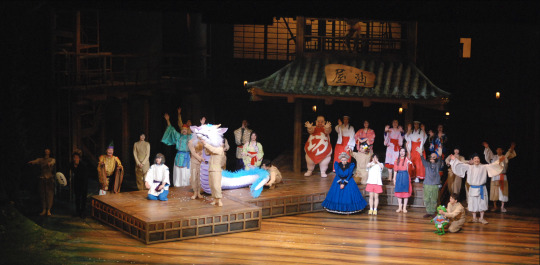
today I went with @birdfriender to see the stage production of Spirited Away, produced by Toho, currently on tour in London.
and like. holy shit??
you might say how the hell could you adapt a film like spirited away to stage. the answer is: incredibly inventive stagecraft, puppetry, costumes and especially choreography.
I was completely blown away by how this play flowed across the stage. set transitions were masked with lighting to direct attention, with the descending screen, with the rotating central platform that managed to function as nearly every part of the bathhouse. stairs, rotating bridges, creative use of size to indicate perspective (like the tiny train that circles the stage), and just the way the crew would move the props with a flourish -
but also the puppetry, like man! the way characters like Kamaji, Yubaba's giant head (used only at moments of intense emotion), and No Face would be operated by entire teams of puppeteers - it was extraordinary. the puppetry director was Toby Olié who's worked on a million different things including War Horse and you can really see them applying all these tricks accumulated over the years...
the show is remarkably faithful to the film; a few scenes are slightly abridged but every sequence I remembered was there and deliver with style. where it does need to pause and breathe, like in the famous train scene, it does. and like... it is fascinating to see an adaptation from animation to theatre. seeing how Mone Kamishiraishi (Chihiro) would stumble and bumb into walls just as she would under the pen of Shinya Ohira. or how a memorable sequence in the film could be represented symbolically: a collapsing pipe as a string of segments pulled on a string, a flower garden by dancers in flower outfits.
some of my fave sequences involved wooden panels carried by dancers, choreographed so the characters would weave between them, or they'd rotate to represent elevators on different floors. it was also fascinating to see how they'd symbolically represent things it would be impossible to stage, often representing fluids with fabric sheets. a transformation could be shown with actors swapping places with a flourish. at other times, it feels like stage magic tricks are in use, like a flash of light drawing your attention to a rope that was there all along. sometimes the puppeteers will be on stage, wearing simple beige outfits that mark them as not being 'present' as they manipulate the soot sprites and frogs and so on.
they also made effective, sparing use of a large projector screen, which descended at certain points, primarily for the driving scene at the beginning and the train scene. this actually didn't use scenes from the movie, but more of a soft, painterly style applied over... probably animated video? hard to say with the blurring, could be live footage. it reminded me of the use of similar screens in the later YoRHa plays, although it was a minor element here.
we weren't allowed to take photos (i took this one during the final bow anyway) and I would have been too busy watching to take them anyway, but this teaser shows briefly a number of the coolest setups. still, it's so much more when you see the whole thing flowing along without interruption.
youtube
and it was very interesting to me looking at this kind of show - big stage, directly homaging an animated film - from the eyes of someone who knows a lot more about film and animation than I do about theatre.
compared to film, you simply do not have closeups; the closest thing is when the puppeteers bring out the segments of Yubaba's giant floating head, but this is used sparingly. so everything is basically a long shot. however, because the acuity of a human eye is much greater than that of a camera, even from near the back of the theatre you can make out a lot of details that you wouldn't be able to make out with an equivalent camera shot. this allows compositions where there is loads going on at stage at once, with the eye being drawn to different areas by lighting and movement.
I do feel like there are definitely things to learn for animators from this kind of stage choreography. so many times I thought like, wow, that's so clever. like how chihiro riding haku was shown by splitting the dragon puppet into segments and putting her on the shoulders of one of the puppeteers.
and everything was done with such style too. if something shuffles off stage, you know it will be done with a wiggle and a flourish. small things but they add so much.
presumably because this seems like an incredibly involved show, there are multiple performers for each major character: four Chihiros, and three Hakus, Yubabas, Kamajis and so on. I'm not sure the exact lineup tonight beyond Chihiro. the exception is Kaonashi (No Face), who is played only by Hikaru Yamano, who gives an incredible performance, sidling and flexing around the stage in all sorts of strange ways that really get across the character's whole deal despite literally performing under a white mask and concealing robe. it's kinda amazing.
another fantastic casting is fundoshi dancer Yuya Igarashi as Kashira (the stack of three big heads that serve Yubaba, and speak only in wordless grunts). he basically has his real head as one of the three, and he has two more heads on his hands, and moves them around in incredibly energetic and funny ways. it's a brilliant way to interpret this, somehow feeling perfectly appropriate to have a buff guy in a red loincloth moving them around.
Yubaba's actress tonight would have been either Mari Natsuki or Hitomi Harukaze; either way she did an incredible job, it was really cool seeing a more human-proportioned version of the character and she brought a lot of energy and authority to the role.
the whole cast did a fucking amazing job honestly. I wish I knew more about theatre acting so I could comment more specifically on the tricks they were doing, but you definitely felt Chihiro's emotions
the production is in Japanese; English subtitles were shown on two screens on either side of the stage. the translation was on the 'honorifics included' end of that scale, but absolutely clear and idiomatic. the format worked - it was generally not hard to follow the action and glance at the subtitles, even though they were further away than they would be in film - and it definitely filled the theatre. I really hope this leads to more Japanese theatrical productions going on tour like this. wish i'd been able to see the Totoro one a few months ago.
definitely this kind of theatre must depend on a fairly obscene budget of the kind that only comes to biiiiig properties like, say, an adaptation of a beloved Studio Ghibli movie (one family turned up in cosplay) - there's a lot to be said for less extravagant staging. at the same time... this really was something.
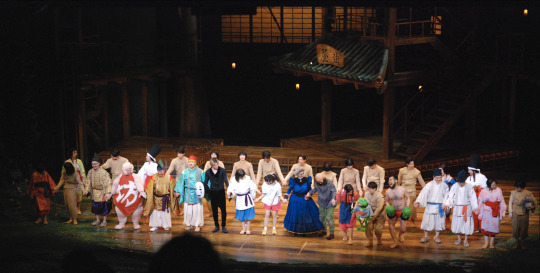
i gotta go to the theatre more
159 notes
·
View notes
Text



A needle felted doll commission I just finished. The commissioner requested No. 6 from the stage play Yorha Boys.
He has a wire skeleton and is slightly posable. The outfit was a fun challenge and uses sheet felt, pleather, string, and jump rings for buckles.
If you want to commission a doll of your own, my form is below
24 notes
·
View notes
Note
9S from Neir Automata?
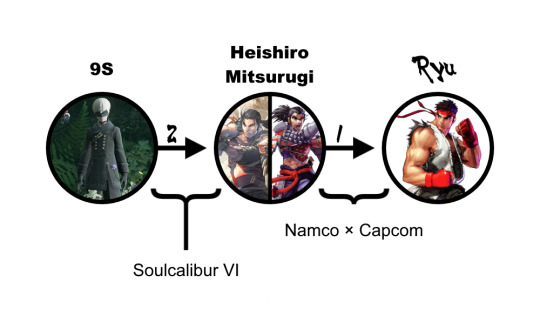
YoRHa No.9 Type S a.k.a. 9S has a Ryu Number of 2.
(explanation below)
While not playable himself, he is visible in the background of 2B's home stage, City Ruins: Eternal Apocalypse.
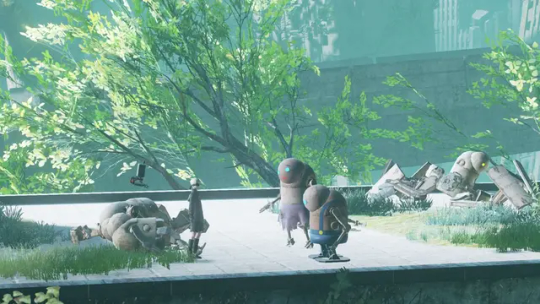
55 notes
·
View notes
Text
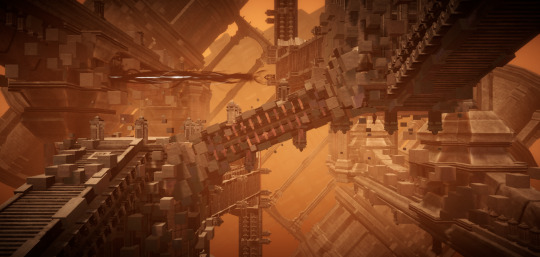
NieR Reincarnation The People and the World Amber Spoiler Post & Theory Hour
Mama on Mama on Mama on Mama in this one. And I'm going to look a little bit too deep into that. Far too deep actually.
What can I say. They did a good job with the shitty gacha game. I'm so sorry, but I am once again validated in my opinion that this is the best NieR writing right behind YoRHa:Dark Apocalypse. It's just. Chef's Kiss.
And sure, I still prefer Sun/Moon over People/World as a story since that one just managed to weave the themes so well with the stories and everything whereas this one has certain moments where it doesn't really line up with stuff it has already established (some/many of the stories kind of seem to disregard parts of their hidden/ex stories which feels weird, also where are hina and yuzuki in all of this as rogue cage wanderers, i have a feeling they're not going to address them at all (which imo would be fine but kind of disappointing)), but we're finally getting the lore payoff we know to expect from Drakenier and it feels so good.
And you know, I did notice that all the seasons so far were in two distinct parts that lined up with their name - and as this was obviously the The People part I was wondering before playing this morning what the The World part would be about. But it didn't even occur to me that we could be going to the "Real World"... (Put a Pin in that)
But let's get into it.
Mama meets Accord (who I'm sure somebody has called mommy before)

I mean at this point we know she's coming - we just don't know when and how. I do wonder if these more and more overt mentions of her might be setup for the next NieR/DoD4 because I feel like Accord as a character would be prime real estate for the new big game, but of course it would also make perfect sense for her to show up here, she already has an established presence in the Cage - and I mean she could just do both!
It's interesting to note btw that the coffer that Yudil's story explicitly points out has recently appeared in the most recent Bakuken stage play (the one that's called Finale even though it's not the final one) where a portuguese merchant (The Cathedral City is on the Iberian Peninsula) called Michael (you know, like the Dragon) had it. Of course, they might also just have reused the prop since they made one for the YoRHa stage play Accord appeared in...
Mama meets Mother

She's giving Mother and she's back with a vengeance rhythm game. Amazing. Tens across the board. I love her fascinator head piece.

As the Mother Expert that I call myself I have to point out some things here:
a) What exactly is Mother Mourning? The Watchers have up until now only been described as motivated by a fervent hate of Humanity and anger - the Gods want to claw themselves free of their humanity-imposed seals and devour the world - so why is this version explicitly shown as sad? Her battle dialogue also kind of sounds... betrayed in a way? "Why Protect People? Destroy" and "Our objective. Why?" seem to hint that maybe Mama (points right at the name) was in with Mother this whole time but has now turned against her. And it makes me wonder if the Cage is a way for humanity to enslave the gods they sealed for profit...
But also, given recent Developments in SinoAlice JP's Ending Arc, there's likely something else in the Cage that the Mourning Mother could be talking to. Maybe the thing we saw in that one cutscene is actually protecting humanity?
b) With some of that already in mind I was thinking about her pose and was trying to find some connection to the dance of her Intoner version in the DoD3 Final Boss when it occured to me in a one-two punch: She's shackled. The Cage is for Her. She's what is Caged. And doesn't that sound like a seal that keeps a certain Round Egg at bay that I have an exciting theory for-
Tangent: Mama meets my Round Egg Theory
okay so strap in because it's time to bring up the thing I bring up every chance I get!
We know there's a connection between the Memory Tree and the Moon Server Data through two things:
a) In the Replicant Remaster's new Ending Kainé goes into the Memory Tree's Data to bring Nier back - which of course means that the Memory Tree contains Nier's data. This is important because
b) In YoRHa:Dark Apocalypse (My Love <3) the Red Girls have a Seed (we'll get back to that in a second) - and out of that Seed grows a Tower that contains "Ego Collectives" of People, which is basically the collection of memories that makes up one person.
Now I know that everyone just handwaved that away as a way to have cheap Replicant references as the first two bosses with the Remaster coming up but lol wouldn't that be easy, did you forget who you're dealing with? Because the exact two bosses used (Knave of Hearts and Hänsel and Gretel) means there's only one person this Ego Collective could belong to: Nier, because only he fought Hänsel and Gretel. (let's ignore that Weiss was there too bc that would be a dumb!!! this is much more fun bc of the implications!!!)
And I'm positive that this was intentional because in the remaster ending - in a scene that's eerily similar to the fight in Tower at Paradigm's Breach - Kainé only fights her memory of Gretel without Hänsel, so they knew.
Why does that matter? It doesn't really, I just wanted to bring it up as a little fun fact, but what does matter is that Y:DA establishes that whatever that Seed the Red Girls have recreated is, it also contains all the memories from the Memory Tree, because that's where those memories were recorded. And they were recreating it, which implies there was a basis to recreate. And that was always the big future overarching NieR plot thread that Y:DA left me with - sure, we know this is where it all ends, the Watchers are over now and this time forever through collaboration and power of friendship - but how did we even get here? How did the Red Girls get a Seed to recreate?
And now it fits right in with what's happening, especially now that we know what exactly the Moon Server can do:
The Moon Server/The Cage can peer into different universes - we know that since at least Hina and Yuzuki (Yuzuki knows Reinkane exists as a game but also their EX stories) - but as far as we know the Seeds only exist in Drakengard's Universe. So why do the Red Girls/The Watchers/The Mourning Mother want to get into the Moon Server/Cage so Bad? (It was even sort of highlighted in the Automata Anime where Adam transformed into a giant Reincarnation Mob - implying really hard that the Red Girls/Logic Virus is indeed behind the attacks on the Cage) Well, maybe it's because they want the Round Egg, because they have been separated ever since DoD1's Final Boss and they need it to Dark Apocalypse.
Before this chapter I thought that the entire Memory Tree might have been built from Seeds in the first place and that's why the Red Girls want into the Moon Server to get a basis to copy - I thought it would make sense that humanity somehow got that dimension-crossing technology needed for it out of a Seed - but that would require the NieR world to have Seeds to use for that and we know next to nothing about them so I just kept it in the back of my mind until something else comes along to strengthen it. I also didn't want to base too much on the cross-over one, even if I personally really don't understand why people are so hesitant to call it canon, it's definitely canon, it's one of the few things Yoko Taro is directly credited to have written the past few years and he literally always writes stuff that right away retcons things, so even if it changes details with Automata he has done the exact same thing multiple times now. ("It's not DoD3's Ending A that leads to DoD1, it's the version of Ending A in this specific novella that's basically the same except for one small thing.")
But you know what other tangentially related thing I can bring up that you won't believe I will stuff into this theory? Why yes, It's Yuki Wada's Breakout Hit Voice of Cards: Forsaken Maiden. And fair warning, this is where it gets entirely unfounded. And also spoilers for that game's ending.
I have the long and well-documented theory that the Spirits from VoC:FM might be the Watchers. In that game Maidens need to sacrifice themselves to the Gods so they 'keep humanity save' in return - but it ends with Laty (the female MC) going into an eternal slumber to sort of 'trap' the gods in her everlasting dream so humanity is save without them. And because I always found that very reminiscent of Drakengard 1's Goddesses I theorized that VoC:FM might have been the folkloric 'inception story' of that system, humanity just reiterated on the mechanics of it so it's spread over multiple people instead of one so nobody has to go to sleep forever.
So with that as an foundational thought, what if humanity did that again? What if they extended it again on more people so fewer people have the sort of responsibility Laty or Furiae had? What if they didn't only extend it to a finite number of people - what if they extended it to every human in every dimension that ever experienced any form of prolonged misery (or whatever else the requirements are to end up in the cage lol)
So what if the Cage is the Seal? What if keeping the Seeds locked up is the purpose of the Cage? What if the Cage is a Cage?
And if the Cage is just NieR's Goddess Seals then the Watchers have a really good reason to get in there: The exact same reason as in Drakengard 1.
But I'm not done. Because what if Mama didn't know that. What if Mama just knew there's a server on the moon and basically every single person ever is trapped in it, eternally doomed to relive the most horrible pain and suffering imaginable for some reason - and some figure, a mother figure if you will, told her she could fix their suffering. That she could change the system for the better by giving them hope and respite by giving them an afterlife. But that was a lie. The figure just wanted her to weaken the system built on sin and suffering so she could break through it and reach the Seeds.
What if Mama (points at the name) realised she was tricked by Mother and is now trying to fix her mistakes? And that's why Mother is Mourning, because she betrayed her?
Don't think so. Mama didn't seem all that "remorseful". But maybe something along those lines though.
Depending on SinoAlice JP's ending whatever other being the Library turns out to be might also be involved - maybe the Library is a god that turned away from the Watchers to help humanity and the Cage is instead a way to protect the being that is the Library which in turn protects humanity... That would be a full circle moment to VoC:FM too...
Either way I'm so stoked to find out what's really happening!!!
Mama meets Mama in the Real World
Already talked alot about Mama, but let's just all applaud ourselves for reading the room! We did it! We knew!
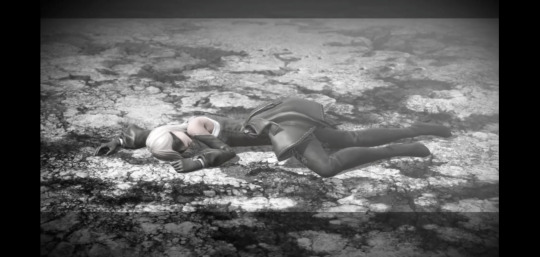
Just as theorized she was 10H all along! Probably should go reread her story to see if it still lines up with what I theorized above... And she's pretty. And has almost the same haircut as Hina and Marie. Hmm. Maybe they should have chosen one of the other Marie designs.
(Small correction: I read that last scene wrong, seems like Mama isn't 10H but Pod 006 - but since the character we're getting is 10H I'll still say we were right :3 ...and yeah, we do control the pod in that scene, makes sense, don't know why I went straight to Mama has to be 10H)
What I'm actually more interested in though is where we're going with this. Like what can she even do in the "Real World", doesn't 10H die constantly in her story for disobedience? So she can't be allowed to do all of this, right? I do think a "We rebuild the Cage on Hopes and Dreams" is in order, but the way to get there... ah! Look, it's the Pin I made you keep in mind!

What if they don't go to that Real World. What if they go to our Real World? Hina & Yuzuki - who came from our or at least another Real World - are notably absent from this arc. And that could just be because the true ending being optional makes things harder for the devs to write around and they want the spotlight off of them bc they were the main characters, but still: I would love a chapter or even just a scene of their perspective of what happens to the Cage. I mean what happens to them now that the Cage falls apart? Could Dark Mama and Papa save them just like Mama did with the others? Do we maybe even meet Dark Mama's and Papa's real forms?
But there's another character that immediately comes to my mind when we talk about "the Real World". And it's because of a throwaway line that I never see anybody bring up... mainly because nobody likes Y:DA.
In her final letter to Konogg, Anogg explains that at some point she visited another world (likely when she fell into the Pseudo-Seed) and in doing so she learned that both her and the world are constructs - which implies she knows that a Real World exists from which this world was created. And sure, that could have been a meta-joke about haha video game. But her constructed self also displays several similarities to moments in Noelle's Chapter - which came out vaguely around the same time - and now all of this lines up with what's happening in the Cage. So yeah. What if the ending scene is her emerging from the Cage to save Konogg just like these characters have done this entire arc? All I have to say is #AnoggForReincarnation. She would be perfect. Do it.
28 notes
·
View notes
